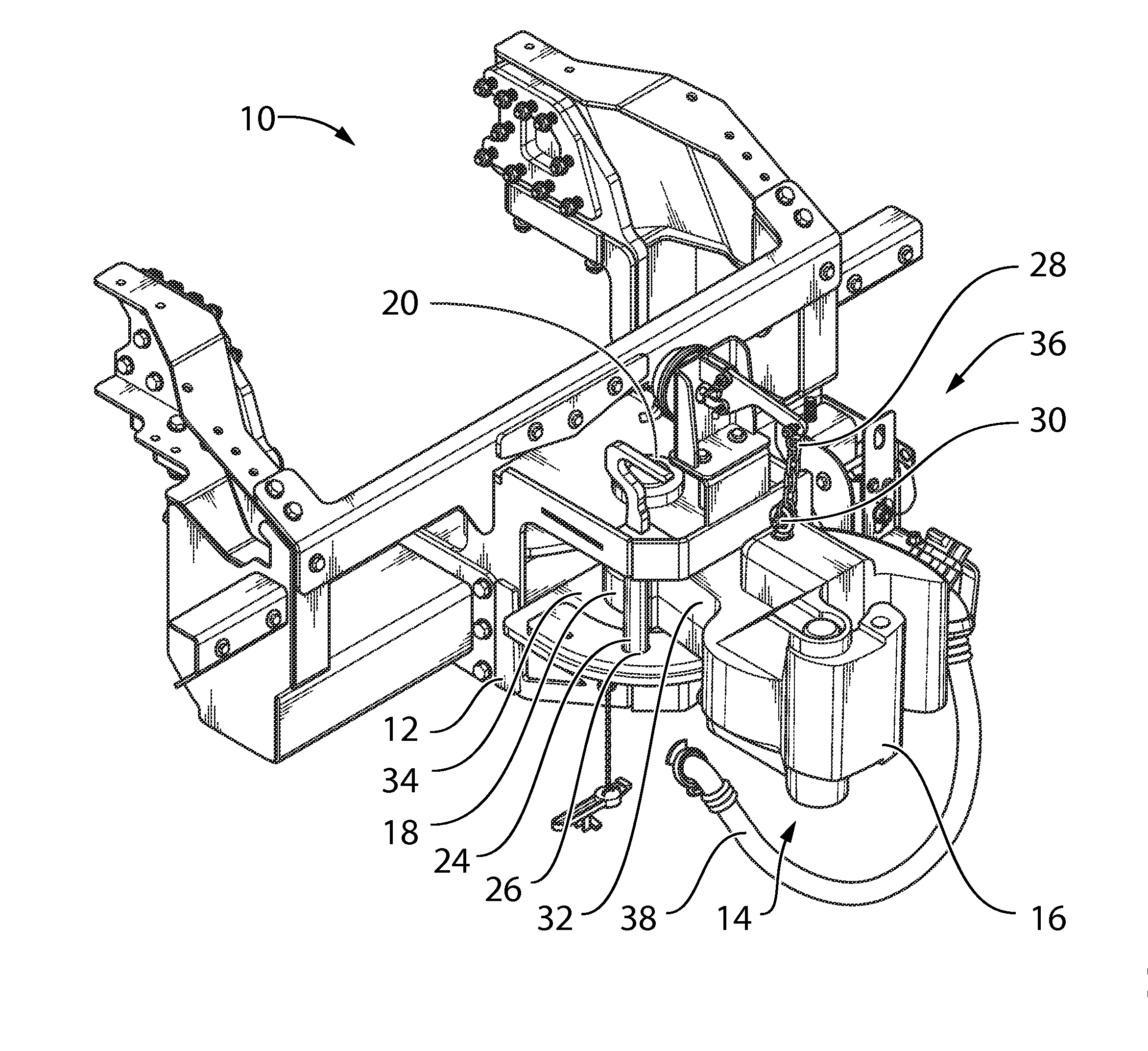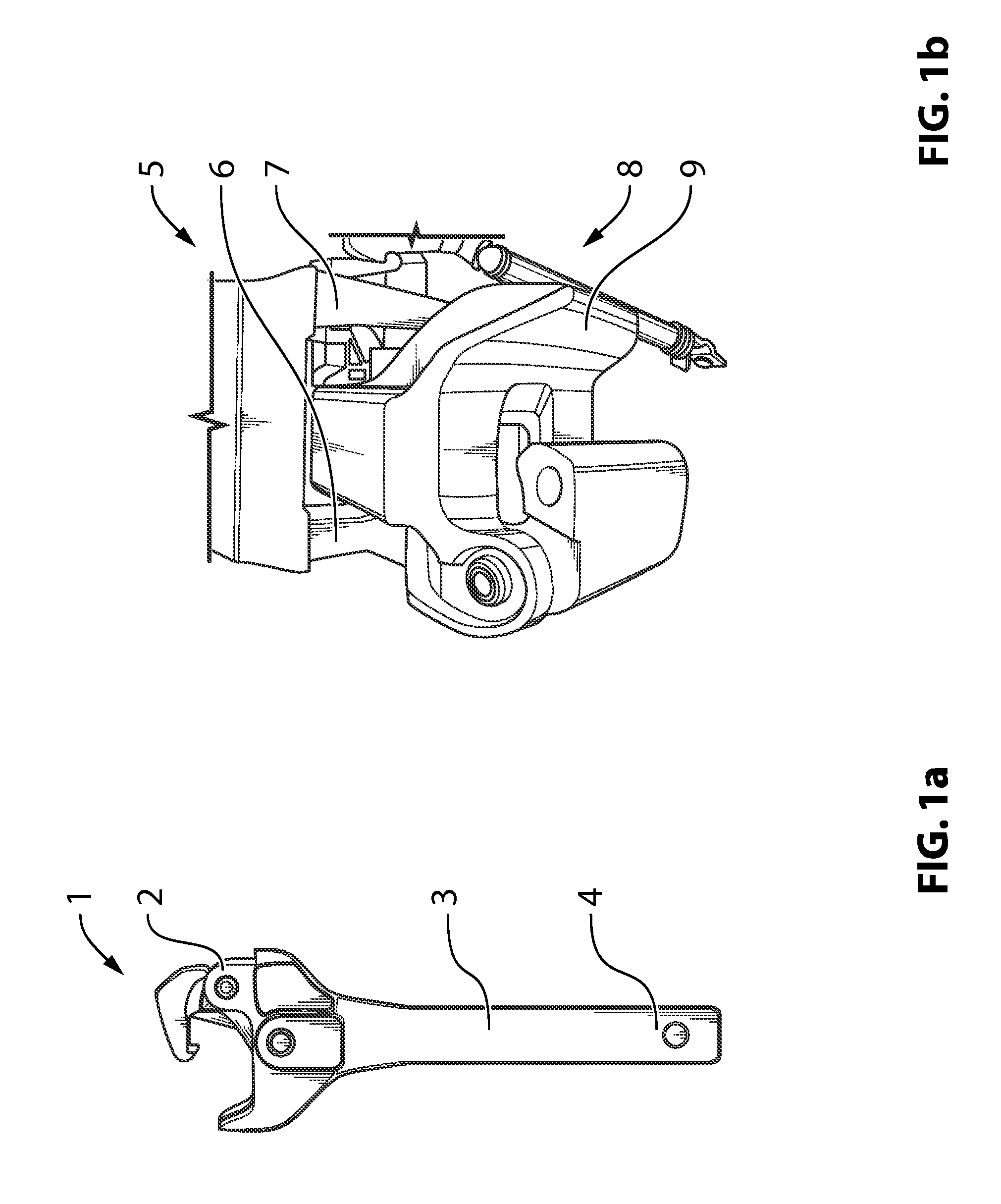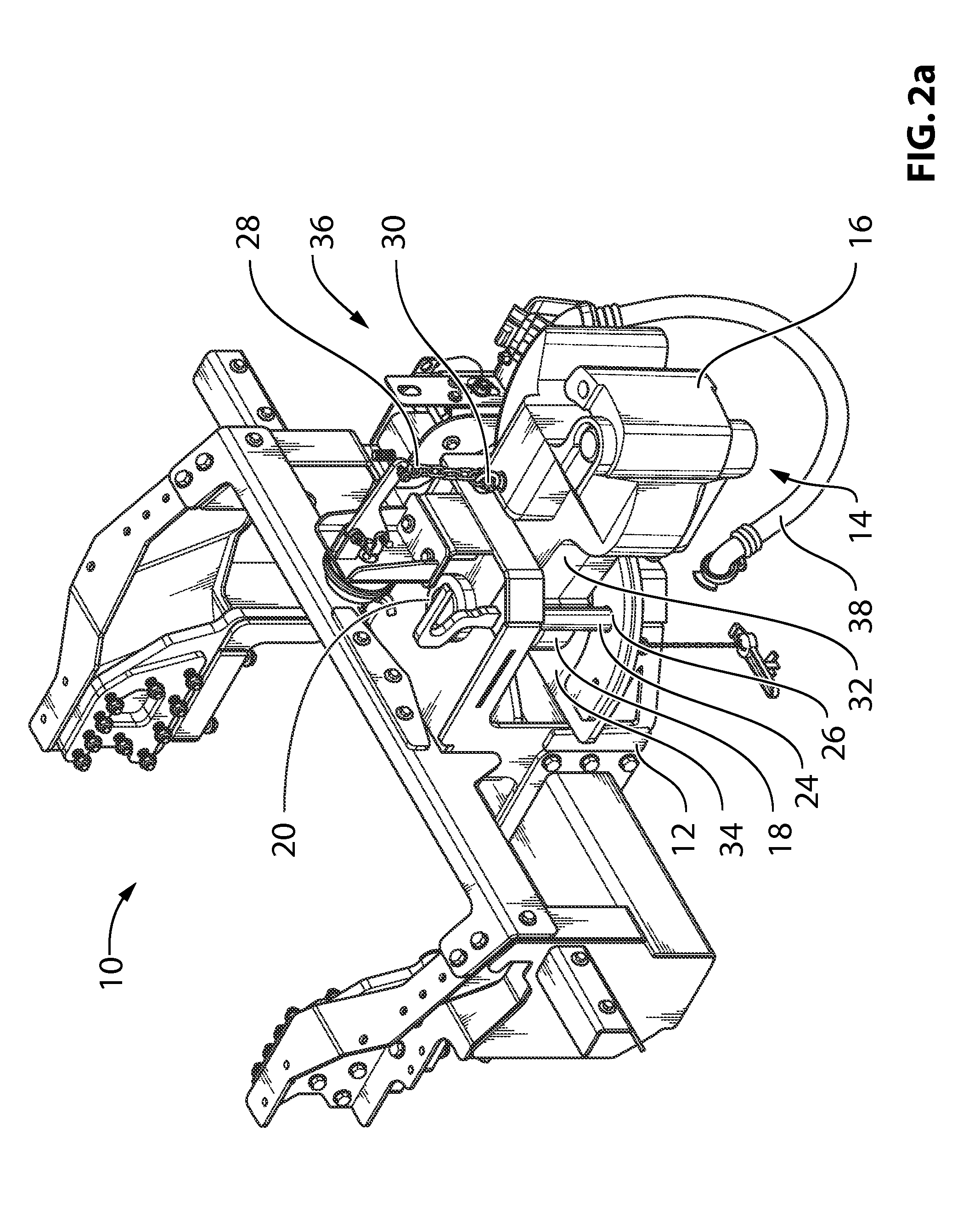Assembly for Extendable Rail-Supported Vehicle Coupler
- Summary
- Abstract
- Description
- Claims
- Application Information
AI Technical Summary
Benefits of technology
Problems solved by technology
Method used
Image
Examples
Embodiment Construction
[0030]In the following description, specific materials and dimensions are not addressed as such may vary by situation and will be determined at least in part by regulations, all of which would be known to those skilled in the art. In addition, the means for attaching the assembly to a particular rail-supportable vehicle will depend in part on the vehicle support structure and will accordingly not be canvassed herein.
[0031]Turning to FIGS. 2a through 2f, an exemplary coupler assembly is illustrated and identified by reference numeral 10. The assembly 10 comprises a frame 12 which is configured for attachment to the internal structure of a rail-supported vehicle (not shown) in a manner which will be situation-specific but within the knowledge of those skilled in the art. The assembly 10 also includes a coupler 14, which coupler 14 comprises a shank 32 with a first end 16 provided with a standard coupling interface (which in the illustrated example is an AAR coupler) and a second end 1...
PUM
 Login to View More
Login to View More Abstract
Description
Claims
Application Information
 Login to View More
Login to View More - R&D
- Intellectual Property
- Life Sciences
- Materials
- Tech Scout
- Unparalleled Data Quality
- Higher Quality Content
- 60% Fewer Hallucinations
Browse by: Latest US Patents, China's latest patents, Technical Efficacy Thesaurus, Application Domain, Technology Topic, Popular Technical Reports.
© 2025 PatSnap. All rights reserved.Legal|Privacy policy|Modern Slavery Act Transparency Statement|Sitemap|About US| Contact US: help@patsnap.com



